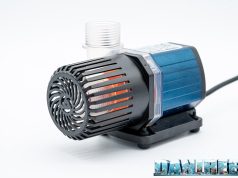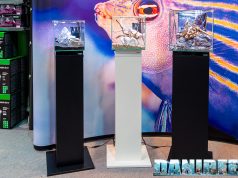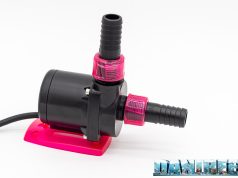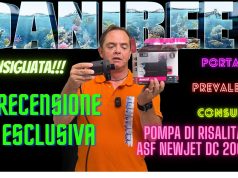Head test
The first test we did was the head. You already know it’s the pump’s capacity to elevate the water over a certain height. In order to this, we measured the lavel reached by the water inside a hose.

As you can see in this picture from our archive, we fix the hose to the terrace, then we turn on the pump we intend to test, we wait about 10 minutes to let it stabilize, then we measure the head.
So, the head we measured was 2 meters against the 2,1 meters declared.
The gap between the declared head and ours is under 5%. A perfect result, falls within the tolerances.
Rate test
To measure the rate has been very easy thanks to the flow rate meter DigiSavant DIGIFLOW 6710M.
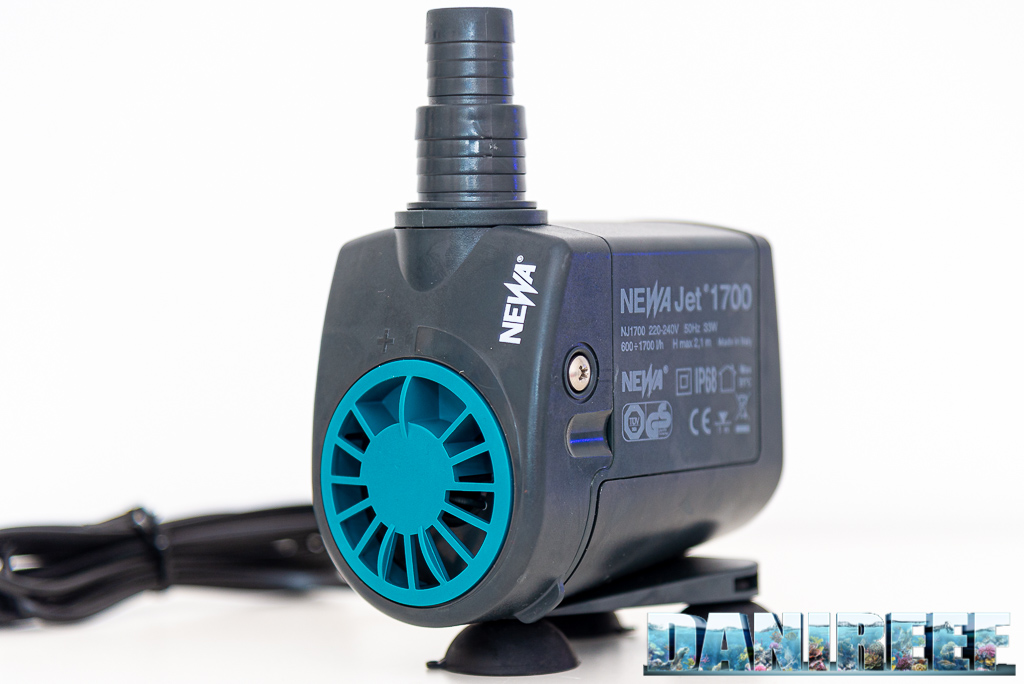
First of all, we connected the hoses to our flow rate meter. We tried to make the device to adhere perfectly to the pump’s outlet.
The measure is expressed in liters per minute. So we only have to multiply the result per 60 to obtain the liters per hour.
Obviously, remember that the measure is valide within the conditions in which we did the test. The hose as we used it could have led to some lacks.
But our system resulted in this value:
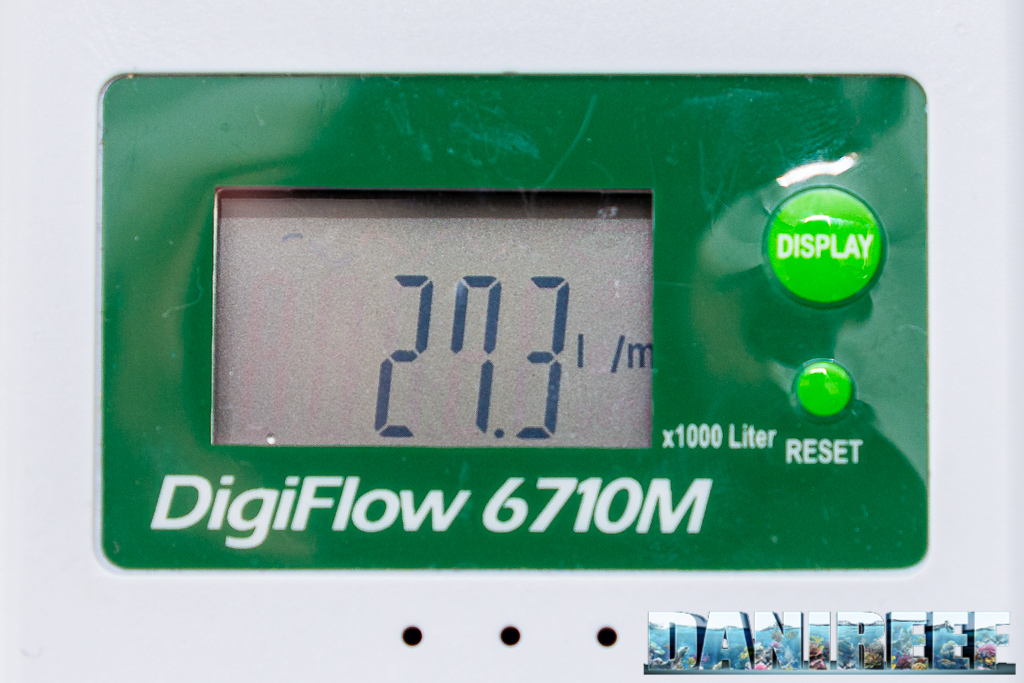
The maximum rate was 1.638 l/h (that is 27,3 l/m*60), considering the tolerance is coincident with the declared 1.700 l/h. Something that happens very rarely! So the pump has reached the 96,3% of the declared value in the conditions of the test. An excellent result if we consider the 66% of the Ecotech Marine Vectra M1 (article), the 67% of the Waveline DC6000 (article), the 70% of the Hydor Seltz D6000 (article) and the 83% of the sister RX 5000 (article), just to name a few of the pumps we tested lately.
When you have to use a return pump, pay attention to the following aspects that can decrease, even drastically, the rate: use the biggest hose connector in dotation; use a larger hose you can; the hose has to be as short as possible and it has to do as few 90° turns as possible. Otherwise the rate will be greatly penalized.
Power consumption test
The measure of the istant power consumption was possible thanks to the useful device RCE PM600, that can also measure the Cos(fi) (or power factor). The result is already given in watt.
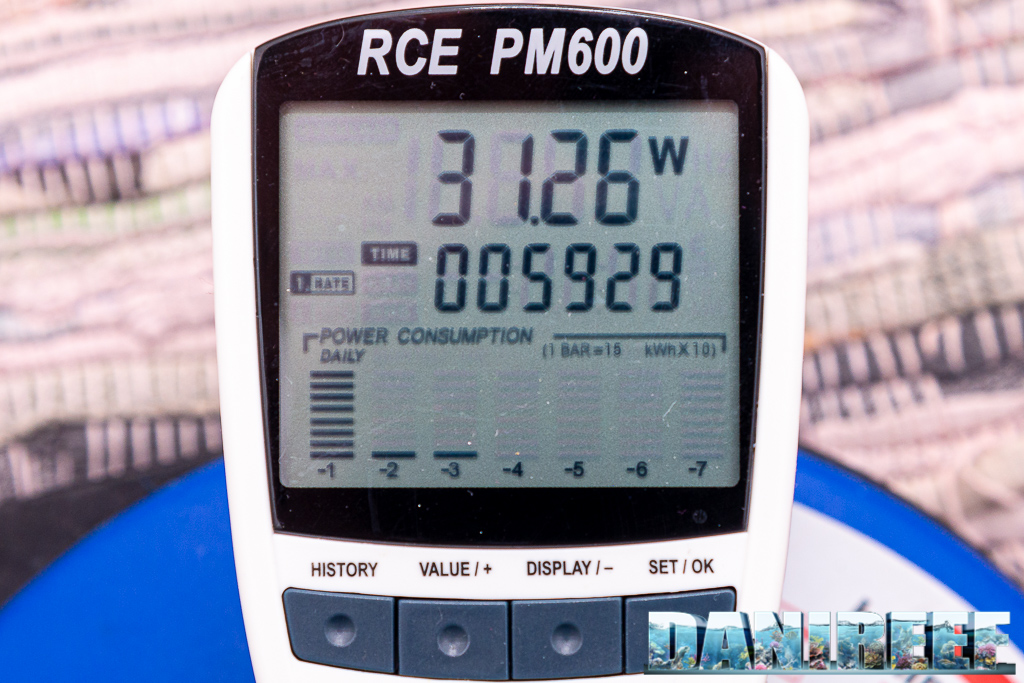
The maximum power consumption of the Newa Jet is 33 watt. According to our measurements is about 31,26 watt, practically the 5% less than the declared value.
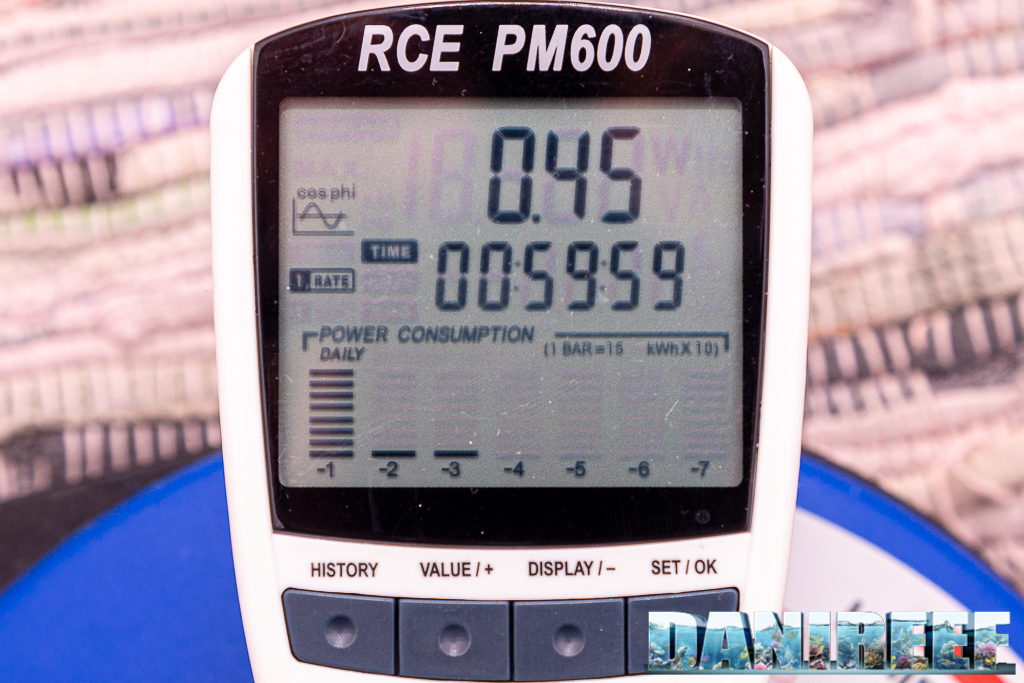
The Cos(fi) measured, that is the power factor, shows a value of 0,45, and practically speaking this means that this pump heats up a lot. Usually every pumps does that, it’s not that this Newa makes an exception.
Considering a consumptions of 31,26 watt, and an energy cost of 0,27 euro per kwh, we could use this pump continuously for a whole year with a power consumption of about 274 kwh, from which derives a cost of 74 euro per year, or 6 euro per month.
Given the size of the pump and, especially, its head value, we couldn’t do our usual noise test.
On page three you find our final comment on the pump.



